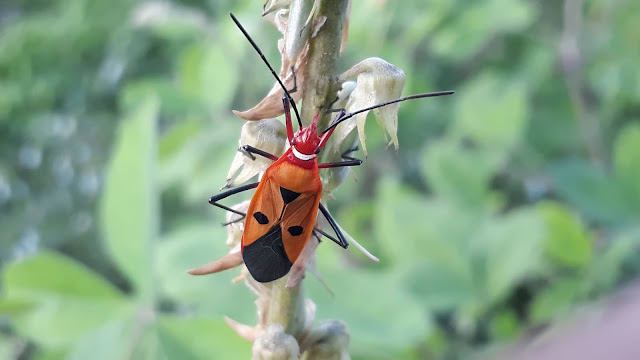Common House Spider (Heteropoda venatoria): Scientific Classification, Habit and Habitat, Food Habit, Identifying Characters
Common House Spider (Heteropoda venatoria): Scientific Classification, Habit and Habitat, Food Habit, Identifying Characters
Scientific
Classification
Kingdom: Animalia
Phylum: Arthropoda
Subphylum: Chelicerata
Class: Arachnida
Order: Araneae
Family: Sparassidae
Genus: Heteropoda
Species: venatoriaHabit
and Habitat:
- Commonly seen inside houses and occasionally on tree trunks.
- It is a nocturnal spider and a good cockroach hunter.
- Females are usually seen to carry disc-shaped egg sac under their body.
Food Habit: The spider feeds on insects, which include mealybugs, aphids, fly, bees,
moths, butterflies, ants, cockroaches, etc. The spider captures them directly
instead of spinning webs. After capturing its prey, the spider injects them
with venom. The venom of this spider contains the toxin HpTX2, a potassium
channel blocker. In some tropical areas, the spider is considered a useful
resident of households because of its efficient consumption of pest insects. It commonly lives in houses and other structures such as barns and sheds, especially in areas that experience cold temperatures. It is sensitive to too much cold and can live outdoors only in warmer climates.
Identifying
Characters:
- Size: Female 25-30 mm, Male 20-25 mm
- Cephalothorax yellowish brown in color.
- A distinct white line is seen above chelicerae and below eyes.
- Male has a broad black band on the carapace.
- Eight eyes present, arranged in two rows.
- Large strong chelicerae present.
- Abdomen oval shaped and yellowish brown in colour.
- Legs are strong and covered with spines.
References:



Comments
Post a Comment